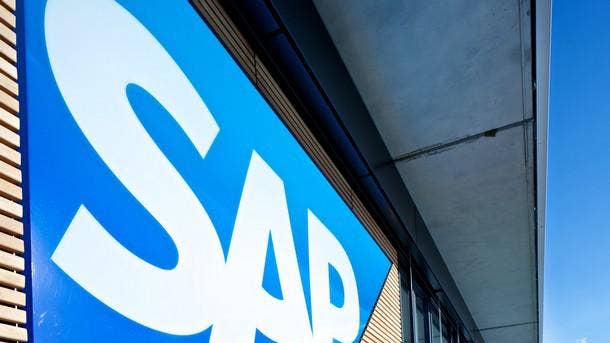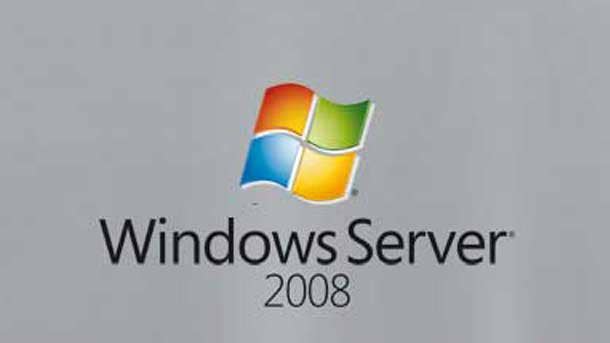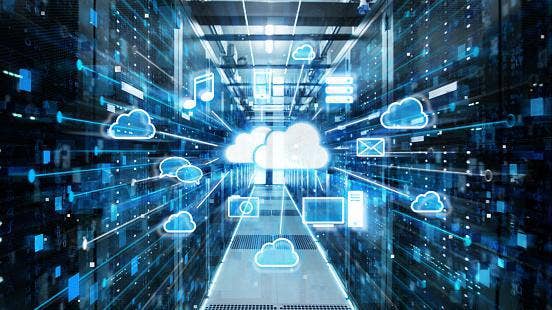8 Public Cloud Trends And Strategies To Watch In 2020
‘If a partner for 2020 really can work on the data strategy—building the data lake and the data warehouse and helping a customer define their data strategy and executing on that—I think they're going to be the long-term winners,' says Sandy Carter, an AWS vice president who leads its public sector partners and programs.

As the shift to cloud computing continues, solution providers have a lot to look forward to in 2020 following a year in which innovations from the big three players—Amazon Web Services, Microsoft and Google—acquisitions and the adoption of multi-cloud and hybrid cloud strategies helped reshape the public cloud landscape.
With the bulk of information technology spending still on-premises, enterprises’ modernization of their core applications will continue to transform business technology and the industry this year.
Gartner estimates worldwide public cloud revenue will grow to $266.4 billion in 2020, up 17 percent from $227.8 billion last year. Sixty percent of organizations will use an external provider’s cloud-managed service offering by 2022—double the percentage from 2018, according to the research firm.
CRN turned to channel leaders from AWS, Google and Microsoft for their input on eight public cloud trends and strategies for partners to watch in the new year. This is what they had to say.

SAP HANA
Sandy Carter, an AWS vice president who leads its public sector partners and programs, said the cloud provider expects continued focus on enterprise workloads due to forthcoming “compelling events.” They include enterprise software maker SAP’s deadline for HANA.
“Everybody has to be to HANA by 2025, and so our partners have an opportunity there to migrate those workloads over because there's a compelling event,” Carter said. “You don't really have to convince somebody. It's really about how do I help you, and what can I do to help you get over there? Whether you're commercial and you're just going to migrate SAP HANA, or whether you're a government customer and you're going to migrate using SAP NS2, that workload is a big opportunity.”

Microsoft Windows Server 2008 Deadlines
Microsoft is ending support—meaning regular security updates—for Windows Server 2008 and 2008 R2 on Jan. 14.
“If you're a partner, that's another kind of low-hanging fruit,” Carter said. “Your customer has to do something, so how do you help them?”
AWS launched its End-of-Support Migration Program for Windows Server in December at re:Invent 2019. The program combines technology with guidance to migrate legacy applications running on outdated versions of Windows Server to newer, supported versions on AWS, without the need for refactoring.
“Refactoring is really hard—it means you have to rewrite code,” Carter said. “We actually acquired some technical assets that are patented that enable you to abstract [Windows Server] 2003 and 2008 code and then bring that into 2016 or 2019.”

Artificial Intelligence And Machine Learning
Carter also sees partner openings in artificial intelligence and machine learning (AI/ML).
“Your approach to AI/ML could be very interesting if you start with the data,” Carter said. “Before you define a machine-learning strategy, you've got to have good data that goes in because that's how you train the machine-learning model. Garbage in, garbage out. The computer can only be as smart as what you put into it.”
Carter said there's a big opportunity for partners to have a thought leadership position by telling customers, “OK, I know you want to get to ML, but let's look at the data first. Do you have the right data quality? Do you have the right data quantity? Do you have the right data source?”
She cited an AWS experiment with a university that involved 11 million lines of romance novel prose and leveraged machine-learning models.
“We trained it: 'Here's your input. Here's your data source. Here's your data quantity,’” she said. “And then we showed it a picture of two people sumo wrestling, and we said, 'OK, tell us what's happening.' So what did the computer spit out? It was ‘two men approach each other and softly kiss each other on the shoulder.’ That's not what they were doing at all. They're getting ready to wrestle.” Carter uses that exercise as an example for customers.
“They laugh, but then I'm like, 'Well, that's what you're doing here, right? You don't have the right data,’” she said. “They're so excited about machine learning, and they forget that there's a prereq [prerequisite] to making it happen.”
“If a partner for 2020 really can work on the data strategy—building the data lake and the data warehouse and helping a customer define their data strategy and executing on that—I think they're going to be the long-term winners,” Carter said. “Even though you might see some partners who go in there and do a quick-and-dirty machine-learning application, the long-term winners will be those who get the data right and then move on to the machine learning.”
It all comes back to AI and the ability for partners to deliver a “more intelligent view of a customer's data state,” according to Gavriella Schuster, Microsoft corporate vice president and channel chief.
“[It] them helps them make better decisions, which really engenders a different buyer for our partners than they've traditionally had,” she said. “It gives them a different place within the supply chain … to really add value back to the business.”

Solution-Focused Partners
Solution-focused partners—those with a “really deep understanding of the solution that you're trying to move over versus just the infrastructure”—is another trend that Carter expects to pick up steam in 2020.
“Examples here would be Amazon Connect, the fastest-growing service we have,” Carter said. “The machine-learning models were trained on real data. You can now have integration with Salesforce. I can't tell you how many partners I've talked to about that [say], 'OK, now I can take that solution, versus saying, let's do compute better, let's do storage better, our networking is faster.’ It's ‘here's how you can manage a call center in the cloud.'”
AWS added retail, public safety and disaster response competencies for its AWS Partner Network members in December.
“We've already had requests for several more competencies from our customers,” Carter said. “Those all give a level of confidence that the partner working on the solution knows your area, knows your industry or … knows the solution, not just the technology. I think that will be a really big trend for 2020 as well.”

Hybrid And Multi-Cloud
Hybrid and multi-cloud are going to “continue to sort of multiply like rabbits,” according to Carolee Gearhart, global channel chief and vice president of worldwide channel sales at Google. Customers are looking for choice combined with efficiency, so they can focus on what differentiates them, she said.
“Gartner is estimating that by 2021, 75 percent of midsize and large organizations will have adopted multi-cloud or a hybrid strategy,” she said. “When I think about that just in terms of where we are in the evolution, that means 2020 is going to be a year of really big acceleration. Customers have said they're looking for approaches that don't lock them into a particular partner or particular vendor. They're looking for folks who can help them embrace this multi-cloud environment.”
Google is uniquely positioned to respond to that market dynamic because it consistently champions openness, according to Gearhart.
“The vast majority of these customers who are in some phase of that evolution of moves to the cloud and not dramatically accelerating are going to look for someone who can support both on- prem, in multiple public clouds and potentially even a private cloud environment,” she said. “With Anthos, Google is really uniquely positioned to address that reality. We really created an option that allows them to sort of code once and deploy across multiple environments.”
Schuster also considers partners’ abilities to deliver hybrid cloud environments to customers to be a top prospect for partners in 2020.
“Customers absolutely are moving their data centers but are recognizing there's things that they still need on premise,” Schuster said. “And so the ability that the partners have to do seamless management across multiple clouds, through data centers and capitalizing on the public cloud with the edge with some of the new things that we just announced around Azure Arc and Azure data services is definitely a big one.”

Innovating On Behalf Of Customers
Organizations are looking beyond just their bottom line and starting to focus on their abilities to deliver more innovation on behalf of their own customers, according to Gearhart.
“They're really thinking more broadly and that being a part of what they can differentiate on,” she said. “Our focus … has been how do we allow customers to really leverage technology and innovation to power their businesses and extend it to customers? I see great examples in the massive acceleration we're seeing around things like CCAI, which is our Contact Center AI. It's taking a specific use case that allows enterprises to deploy AI and get a ton more value out of the data than if they did it by themselves. It's better for the customer, but it's also better for the agent and ergo, too, for the company. It actually drives down their costs per call, etc.”
Gearhart highlighted last year’s collapse of 178-year-old Thomas Cook—the London-based global travel company that went into liquidation last year due to crippling debt and competition from online booking sites—as an example of a company that failed to innovate for customers.
It’s an illustrative story for companies to say, “Hey, look, I can be disrupted,” she said. “That's kind of the warning story that has folks really thinking about … the benefit to our customers' customers.”

Democratization Of Technology
“We're going to see technology continue to be more accessible and democratized overall,” Gearhart said.
Google’s corporate mission is to “organize the world's information and make it universally accessible and useful,” and Google Cloud is building on that by helping customers unlock and access infrastructure they otherwise couldn't use, according to Gearhart.
“I see that as culminating now in terms of some of the things that we're doing with AutoML, places where we're taking that to the next level of innovation that's not requiring deep data scientists to continue to benefit,” she said. “It's really unlocking that. As someone who is responsible for partners here at Google, I see this super concretely.”
Gearhart referenced Quantiphi, an AI/ML solution provider based in Marlborough, Mass., that was named Google Cloud’s Machine Learning Partner of the Year last April.
“It's a great example of ... companies that are being started out of the types of opportunity Google Cloud has unlocked, and they've been further built by what we've been able to do from an AI perspective,” she said. [Quantiphi co-founder Asif Hasan has] got a super interesting origin story on how his business was really enabled by the set of opportunities that were unlocked by hyper-scalers and specifically GCP [Google Cloud Platform] and the edge that we had on data and ML. Having compute and storage available on-demand was a key part of him being able to found his company because it didn't require a massive investment right up front to be able to have access to that. The pivotal point for him and his business where Google's open strategy really played a role was the open-source movement.”

Internet Of Things
The Internet of Things will continue to be “explosive” in delivering intelligence through every device and everything that a customer does, according to Schuster.
“Every business has some level of a client or contact point with a customer on something physical, and the ability to make that intelligent is what IoT does for our customers,” Schuster said. “That's a big, big business for our partners to bridge the traditional hardware businesses that they've been in with a cloud services and business intelligence business, which really opens up new opportunities for them.”
Gartner also identified IoT has one of the top 10 trends that infrastructure and operations leaders must start preparing for to support digital infrastructure this year, and it said no one vendor likely will have a complete end-to-end solution.